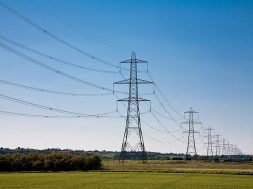
New and cleaner options could soon replace the role of gas-based power in meeting peak electricity demand – EQ
0
0
In Short : Allocating more domestic gas to gas-based power plants or allowing the blending of liquefied natural gas (LNG) with domestic fuel could improve the affordability of gas-fired electricity needed to meet peak demand.
In Detail : As energy storage attains commercial viability and round-the-clock renewables capacity increases in the medium-term, the role of gas-based power is likely to fizzle out. As energy storage attains commercial viability and round-the-clock renewables capacity increases in the medium-term, the role of gas-based power is likely to fizzle out.
Rapidly rising peak power demand has resulted in the Indian government taking proactive measures, including relying on gas-based power, to ensure there is no supply shortfall.
Ongoing trends, such as shifting of peak to daytime, increased deployment of renewable energy assets, improving economies of scale for battery storage and the rise of round-the-clock tenders with more competitive bidding rates for firm and dispatchable renewable energy (FDRE) point to the diminishing role of gas-based power plants for meeting peak power needs in the medium-term.
India’s dependence on gas-based power for meeting its soaring peak power demands during the scorching summer months may reduce in the long term, a new briefing note from the Institute for Energy Economic and Financial Analysis (IEEFA) finds.
The note finds that gas-based power is already a costly option in the short-term without higher allocation of domestic gas or the option to blend imported liquefied natural gas (LNG) with locally produced fuel to the electricity generating units. In the medium term, energy storage options are likely to attain commercial viability and round-the-clock renewable energy capacity will likely increase, further reducing the cost competitiveness of gas-based electricity.
“Gas-based power plants have a limited role in meeting peak demand, even in the short term. Their role is likely to diminish in the coming years with the government looking at innovative tendering to ensure round-the-clock availability of renewable energy to facilitate grid integration and enable higher capacity utilisation of renewable energy,” says the note’s author, Purva Jain, Energy Specialist – Gas & International Advocacy, IEEFA.
“Further, in the medium- to long-term, the increase in the commercial viability of battery storage and the availability of pumped storage will help eliminate the use of gas,” she adds.
Grid-scale Energy Storage Systems (ESS) tenders, including pumped hydro storage and firm and dispatchable renewable energy (FDRE) to ensure 24×7 supply, are already helping overcome the variable nature of solar and wind power. Their capacity is likely to increase in the coming years.
A previous report by IEEFA and JMK Research states that FDRE tenders dictated the recent surge of the “renewable + ESS” tender segment, with FDRE accounting for 17% of the 69 gigawatts (GW) of renewable energy tenders issued in the fiscal year (FY) 2023-24.
The heat wave sweeping across India has reached unprecedented levels, and government data shows that immediate respite is unlikely. On 24 May 2024, peak demand crossed the government’s estimate of 235GW, to touch almost 240GW.
“To meet the immediate peak power demand, the government is ensuring that all available plants, including gas-based power plants that have either been underutilised or non-operational due to fuel constraints, are made operational,” says Jain.
IEEFA’s cost analysis shows that even in the short term, using gas-based power to meet peak demand requires allocating a higher amount of domestic gas, with flexibility on the minimum guarantee obligation (MGO) on gas offtake to make it cost-effective.
“If the prices of short-term traded power, power from domestic gas and that from imported LNG for April 2023 are compared, it would be clear that there is a strong case for allocating a limited amount of domestic gas for partially operating gas-based power capacity to cater to peak demand and ancillary services,” says Jain.
“Even partial allocation of domestic gas can help lower tariffs. The tariffs can come down to Rs5.83 per unit by increasing the allocation of domestic gas to allow 50% blending with LNG, compared to Rs13.70 per unit, which emerged as the lowest bid for gas-based power supply using LNG in April 2023,” she adds.
However, emerging trends indicate that peak demand hours are shifting to the daytime, when solar energy can play a more prominent role. Peak demand is also shifting to the months when wind power is more widely available.
“Therefore, while imported coal and gas-based power can help the government mitigate a power crisis in the short-term, solar, wind and storage are more viable options in the coming years,” says Jain.
About IEEFA: The Institute for Energy Economics and Financial Analysis (IEEFA) examines issues related to energy markets, trends, and policies. The Institute’s mission is to accelerate the transition to a diverse, sustainable and profitable energy economy.








